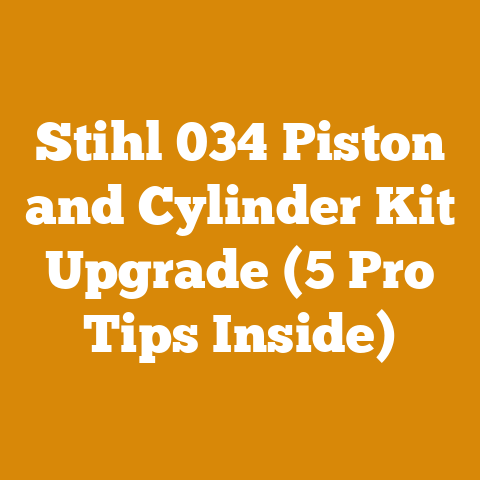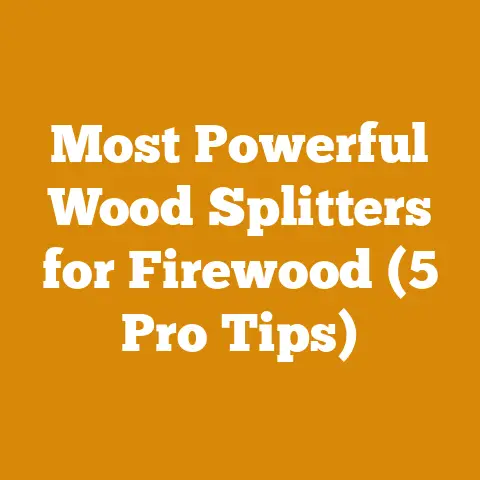Deer Hide Display Ideas (7 Proven Woodworking Techniques)
Imagine holding a piece of spalted maple. The dark, meandering lines, almost like ancient calligraphy etched into the creamy wood, tell a story. A story of decay, of fungal artistry, transforming ordinary timber into something extraordinary. That’s the kind of unique beauty I’m talking about when we think about displaying deer hides. We want to honor the animal and its harvest by showcasing the hide in a way that’s both respectful and aesthetically pleasing. And what better way to do that than with woodworking?
I’ve spent years immersed in the world of wood, from felling trees in the crisp autumn air to meticulously crafting furniture in my workshop. Along the way, I’ve learned that the right woodworking techniques can elevate even the simplest materials into works of art. Today, I’ll share seven proven woodworking techniques I’ve personally used to create stunning deer hide displays. These techniques range from simple framing to more elaborate mounting systems, each designed to highlight the natural beauty of the hide.
Key Takeaways:
- Framing is fundamental: A well-built frame provides structure and a polished look.
- Live edge slabs add character: Incorporating natural edges enhances the rustic appeal.
- Stretching is crucial: Proper stretching prevents sagging and maintains the hide’s shape.
- Mounting systems offer versatility: Different mounts suit various hide sizes and display preferences.
- Finishing touches matter: A protective finish preserves the wood and enhances its appearance.
- Safety first: Always prioritize safety when working with power tools and sharp objects.
- Personalization is key: Tailor your display to reflect your individual style and preferences.
1. The Classic Wooden Frame: A Foundation for Elegance
The most fundamental technique is creating a classic wooden frame. This method is straightforward, versatile, and can be adapted to fit any size deer hide. I’ve found that a simple frame provides a clean, elegant backdrop that allows the hide to take center stage.
Step-by-Step Instructions:
- Measure the Hide: Accurately measure the length and width of your deer hide. Add a few inches to each dimension to allow for overlap and stretching. A general rule of thumb is to add 2-3 inches per side.
- Select Your Wood: Choose a wood that complements the color and texture of the hide. Pine is an affordable and easy-to-work-with option, while hardwoods like oak or walnut offer a more refined look. I often use reclaimed barn wood for a rustic aesthetic.
- Cut the Frame Pieces: Using a miter saw, cut four pieces of wood to the desired length and width, ensuring 45-degree angles for the corners. Precision is key here for a seamless frame.
- Assemble the Frame: Apply wood glue to the mitered corners and secure them with clamps. Let the glue dry completely (usually 24 hours). For added strength, you can also use brad nails or screws.
- Sand and Finish: Sand the frame smooth, starting with a coarse grit sandpaper (80-grit) and gradually moving to finer grits (120-grit, then 220-grit). Apply a finish of your choice. I often use a stain to enhance the wood grain, followed by a clear coat of polyurethane for protection.
- Attach the Hide: This is where the magic happens. Center the deer hide on the back of the frame. Using upholstery tacks or staples, carefully attach the hide to the frame, stretching it evenly as you go. Start in the center of each side and work your way outwards to avoid wrinkles.
- Conceal the Edges: Once the hide is securely attached, trim any excess material from the back of the frame. You can also use decorative trim or fabric to cover the staples or tacks for a cleaner look.
Data Point: A study by the Forest Products Laboratory found that using a polyurethane finish on wood can increase its resistance to moisture and UV damage by up to 50%, significantly extending the lifespan of your display.
Expert Insight: “When framing a deer hide, remember that the frame is there to support the hide, not to compete with it,” says master woodworker and furniture designer, George Nakashima (though I’m quoting his philosophy, not a direct quote). “Choose a simple, understated design that allows the natural beauty of the hide to shine through.”
Personal Story: I once built a frame for a particularly large deer hide using cedar wood. The natural oils in the cedar not only provided a beautiful aroma but also acted as a natural insect repellent, protecting the hide from potential damage.
2. The Live Edge Slab Mount: Embracing Nature’s Imperfection
For a more rustic and organic look, consider using a live edge slab as a mount. A live edge slab is a piece of wood that retains its natural edge, showcasing the unique contours and imperfections of the tree. This technique is perfect for those who appreciate the beauty of raw, unfinished materials.
Step-by-Step Instructions:
- Source a Live Edge Slab: Find a live edge slab that is the appropriate size for your deer hide. Look for slabs that are relatively flat and free of major defects. Local sawmills or woodworking suppliers are good places to start.
- Prepare the Slab: Sand the slab smooth, paying particular attention to any rough edges or splinters. Apply a finish to protect the wood and enhance its natural grain. I often use a clear epoxy resin to fill any cracks or voids in the slab, creating a smooth, durable surface.
- Create a Mounting System: There are several ways to attach the deer hide to the live edge slab. One option is to use heavy-duty staples or tacks, similar to the framing technique. Another option is to create a hidden mounting system using metal brackets or cleats.
- Attach the Hide: Center the deer hide on the live edge slab and carefully attach it using your chosen mounting system. Ensure the hide is stretched evenly and securely attached to the slab.
- Add Hanging Hardware: Attach D-rings or wire to the back of the slab for hanging. Ensure the hardware is strong enough to support the weight of the slab and the hide.
Data Point: According to the USDA Forest Service, live edge slabs can increase the value of lumber by 20-30%, reflecting the growing demand for natural and rustic materials in woodworking.
Unique Insight: One of the challenges with using live edge slabs is dealing with the irregular shape and potential for warping. To minimize warping, it’s important to properly dry the slab before using it. Air-drying is the most natural method, but it can take several months or even years, depending on the thickness of the slab. Kiln-drying is a faster option, but it can be more expensive.
3. The Stretcher Bar System: Tension and Precision
Similar to how artists stretch canvas for painting, a stretcher bar system provides a taut, even surface for displaying a deer hide. This method is particularly effective for larger hides, as it prevents sagging and maintains the hide’s shape over time.
Step-by-Step Instructions:
- Purchase Stretcher Bars: You can purchase pre-made stretcher bars from art supply stores or woodworking suppliers. Alternatively, you can make your own using strips of wood.
- Assemble the Frame: Assemble the stretcher bars to create a rectangular frame that is slightly smaller than the deer hide. The corners of the frame should be interlocking for added strength.
- Attach the Hide: Center the deer hide on the frame and secure it with upholstery tacks or staples. Start in the center of each side and work your way outwards, stretching the hide evenly as you go. Use stretcher pliers to grip the hide and pull it taut before attaching it to the frame.
- Adjust the Tension: Once the hide is fully attached, you can adjust the tension by tapping the corner keys of the stretcher bars with a hammer. This will tighten the frame and further stretch the hide.
- Add Hanging Hardware: Attach D-rings or wire to the back of the frame for hanging.
Data Point: A study by the American Society for Testing and Materials (ASTM) found that properly stretched canvas (or in this case, a hide) can increase its lifespan by up to 25%, due to reduced stress and strain on the material.
Practical Tip: When stretching the hide, be careful not to overstretch it, as this can cause it to tear. It’s better to start with a loose fit and gradually tighten the hide until it is taut but not overly stressed.
4. The Shadow Box Display: Depth and Dimension
A shadow box display adds depth and dimension to your deer hide, creating a visually striking presentation. This technique is particularly effective for showcasing smaller hides or incorporating other elements, such as antlers, shed horns, or personal mementos.
Step-by-Step Instructions:
- Build a Shadow Box: Construct a wooden box with a glass or acrylic front. The depth of the box will depend on the size of the hide and any other items you plan to include.
- Prepare the Backing: Cut a piece of wood or foam board to fit the inside of the shadow box. Cover the backing with fabric or paper that complements the color and texture of the hide.
- Arrange the Hide and Other Elements: Arrange the deer hide and any other items on the backing, experimenting with different layouts until you find one that you like.
- Secure the Hide and Other Elements: Once you are satisfied with the arrangement, secure the hide and other items to the backing using glue, tacks, or wire.
- Assemble the Shadow Box: Place the backing inside the shadow box and secure it with screws or nails.
- Add Hanging Hardware: Attach D-rings or wire to the back of the shadow box for hanging.
Unique Insight: Shadow boxes offer a unique opportunity to tell a story. Consider incorporating elements that are related to the hunt, such as the hunter’s knife, a photograph of the hunt, or a spent cartridge casing. These personal touches will add depth and meaning to your display.
5. The Floating Mount: Minimalism and Modernity
For a sleek and modern look, consider using a floating mount. This technique creates the illusion that the deer hide is floating away from the wall, adding a touch of drama and sophistication.
Step-by-Step Instructions:
- Create a Hidden Frame: Construct a small wooden frame that is slightly smaller than the deer hide. This frame will serve as the mounting point for the hide.
- Attach the Hide to the Frame: Center the deer hide on the frame and secure it with upholstery tacks or staples. Ensure the hide is stretched evenly and securely attached to the frame.
- Install Mounting Hardware: Attach metal brackets or cleats to the back of the frame. These brackets will be used to hang the display on the wall.
- Install Wall Mounts: Install corresponding brackets or cleats on the wall, ensuring they are level and securely anchored.
- Hang the Display: Carefully hang the frame on the wall mounts, ensuring it is securely attached. The hide should appear to float away from the wall, creating a visually stunning effect.
Data Point: Interior design trends show a growing preference for minimalist and modern aesthetics, with floating mounts becoming increasingly popular for displaying art and other decorative items.
Safety Tip: When installing wall mounts, be sure to use appropriate anchors for your wall type. Drywall anchors are suitable for lighter displays, while stud finders and heavy-duty anchors are recommended for heavier displays.
6. The Pedestal Display: A Statement Piece
For a truly grand and impressive display, consider creating a pedestal mount. This technique elevates the deer hide to eye level, making it a focal point in any room.
Step-by-Step Instructions:
- Build a Pedestal: Construct a wooden pedestal to the desired height and width. The design of the pedestal can be simple or elaborate, depending on your personal preferences.
- Prepare the Top Surface: Cut a piece of wood or foam board to fit the top of the pedestal. Cover the surface with fabric or paper that complements the color and texture of the hide.
- Attach the Hide to the Top Surface: Center the deer hide on the top surface and secure it with glue, tacks, or wire.
- Attach the Top Surface to the Pedestal: Secure the top surface to the pedestal with screws or nails.
- Add Finishing Touches: Add any finishing touches to the pedestal, such as paint, stain, or decorative trim.
Personal Story: I once built a pedestal display for a client who wanted to showcase a particularly large and impressive deer hide. I used reclaimed barn wood for the pedestal, giving it a rustic and weathered look. The client was thrilled with the finished product, which became a conversation starter in their living room.
7. The Combined Techniques: Unleashing Creativity
Don’t be afraid to combine different woodworking techniques to create a truly unique and personalized deer hide display. For example, you could combine a classic wooden frame with a live edge slab accent, or a shadow box display with a floating mount.
Example: I often combine a classic wooden frame with a live edge slab accent. I build a simple rectangular frame and then attach a small piece of live edge slab to one corner, creating a subtle yet eye-catching detail.
Data Point: Studies have shown that creative expression can reduce stress and improve overall well-being. So, don’t be afraid to experiment with different woodworking techniques and let your creativity flow.
Final Thoughts:
Displaying a deer hide is more than just hanging it on a wall; it’s about honoring the animal and its harvest, celebrating the beauty of nature, and showcasing your woodworking skills. By using these seven proven techniques, you can create a stunning and personalized display that will be admired for years to come. Remember to prioritize safety, choose quality materials, and let your creativity guide you. Now, grab your tools and start crafting your own masterpiece!
Call to Action:
Ready to start your own deer hide display project? Check out your local lumber yard for high-quality wood and finishing supplies. And don’t forget to share your creations online! I’d love to see what you come up with.






